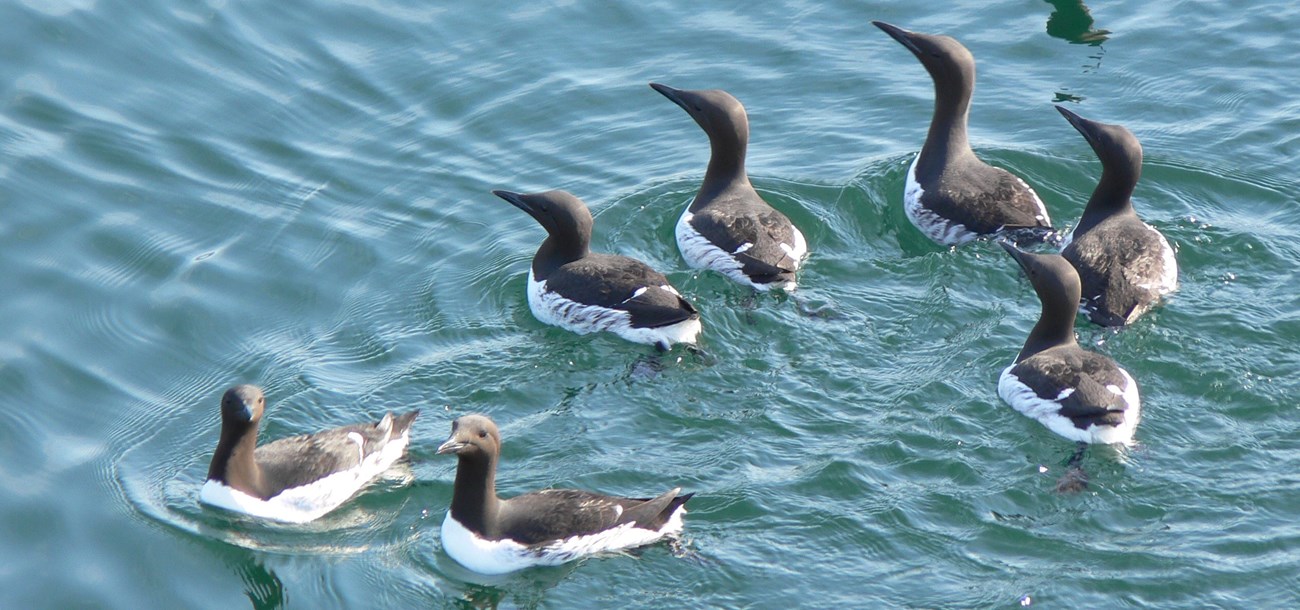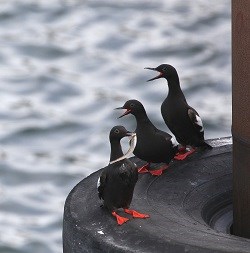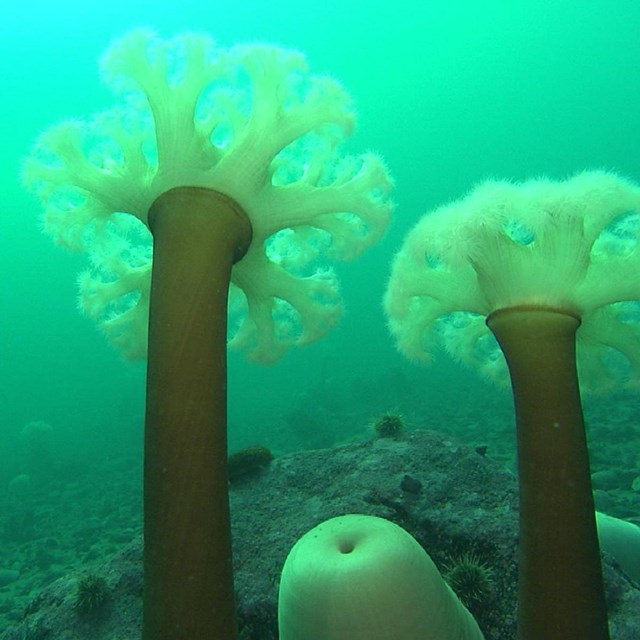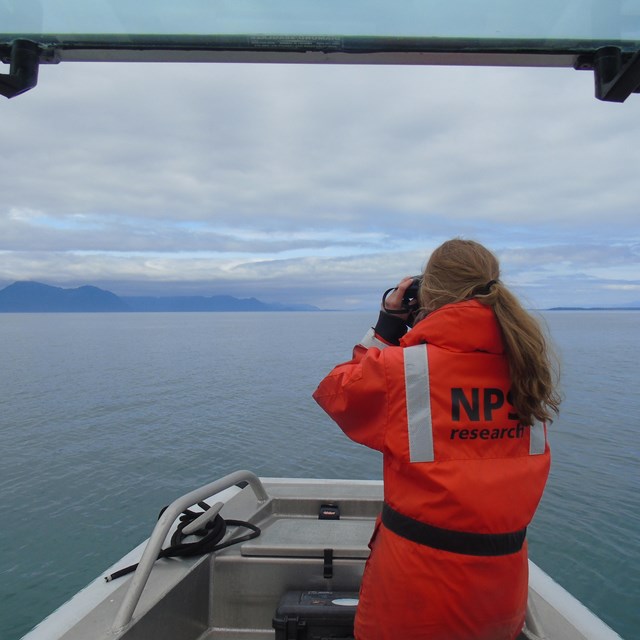Last updated: October 26, 2021
Article
Seabirds in Glacier Bay

The relationship between seabirds and humans is long and varied. Early seafarers watched seabirds closely to locate land. Alaska's native population relied on seabirds, too. Aleut and Eskimo told time by their movements and used different parts of the birds for food, clothing and decoration. Seabirds also have appeared in native stories and on totem poles. Overall, they have been a traditional source of food for travelers and hunters, and fishermen have gauged the potential for a good haul by the presence of seabirds over the water.
Populations and Habitat
Seabirds can live a long time (20-60 years) and are colonial; that is, they tend to live in colonies and then only to breed. Non-breeders group themselves only when threatened by a predator. Colonies are typically dense and can be found on the ledges of cliffs, on isolated islands, such as South Marble Island, in trees and in underground burrows. Compared with other birds, seabirds breed later in life and have fewer young on whom they spend a lot of time. For the most part, seabirds have only one clutch a year which is hatched in late June, and both parents take care of the hatchlings, sometimes for as long as six months. After the breeding season is over, many species of seabirds migrate, some covering immense distances.Feeding habits
Seabirds eat krill, squid and small fish but not all seabirds feed in the same way. Some feed while they are flying, some while they're swimming. Some eat off the surface of the water, taking advantage of the turbulence and resulting bounty from tidal currents. Others dive right in, and the style of diving differs with the species. Then, there are those that steal food from others or eat what others have left behind.
Adaptations
Seabirds have evolved several traits to enable them to survive a watery environment. When eating and drinking, they also consume excessive amounts of seawater, so they have developed a desalinization system and special glands to remove salt from their bodies. Several species have unique bills that are adapted to their particular feeding style: some have filters, others are hooked and still others, such as skimmers, have longer lower mandibles ideally suited for a bird that does not land while it eats. Their drab body color and, sometimes, countershading (dark on top, light on the bottom) help them blend in with their environment and act as protective devices. Because they live on water, seabirds have to waterproof their bodies. They do this by using the oil located at the base of their tails when they preen themselves. Because of the cold, they have many more feathers than do most birds, plus a heavy layer of down underneath. In order to help them swim, seabirds' legs are set farther back on their bodies than other birds, and diving seabirds' bones are heavy which lessens their buoyancy. They also have more blood, compared to their total body weight. This feature enables them to store oxygen in their muscles. Even their wings indicate adaptations that allow them to feed more efficiently. Birds that dive for their food have shorter wings, while seabirds that live solely on the ocean have much longer wings.Threats and Concerns
Several environmental factors threaten the survival rates of seabirds. Many die in fishermen's drift gill nets, and oil pollution can prevent the birds' ability to fly. Toxins and other pollutants have also taken their toll on the population. Overfishing by fisheries has caused some species to change what they eat, while others have begun to breed less and decline. However, no threat to their existence is as significant as the threat posed by the human introduction of exotic species (cats, rats and especially foxes) into the seabirds' habitat.-
 Birds Eye ViewGlacier Bay Birds
Birds Eye ViewGlacier Bay Birds281 species of birds have been recorded in Glacier Bay.
-
 Beneath the SurfaceGlacier Bay Ocean
Beneath the SurfaceGlacier Bay OceanExplore the deep, cold waters of Glacier Bay.
-
 Dig DeeperScience & Research
Dig DeeperScience & ResearchGlacier Bay is a living laboratory for research.
